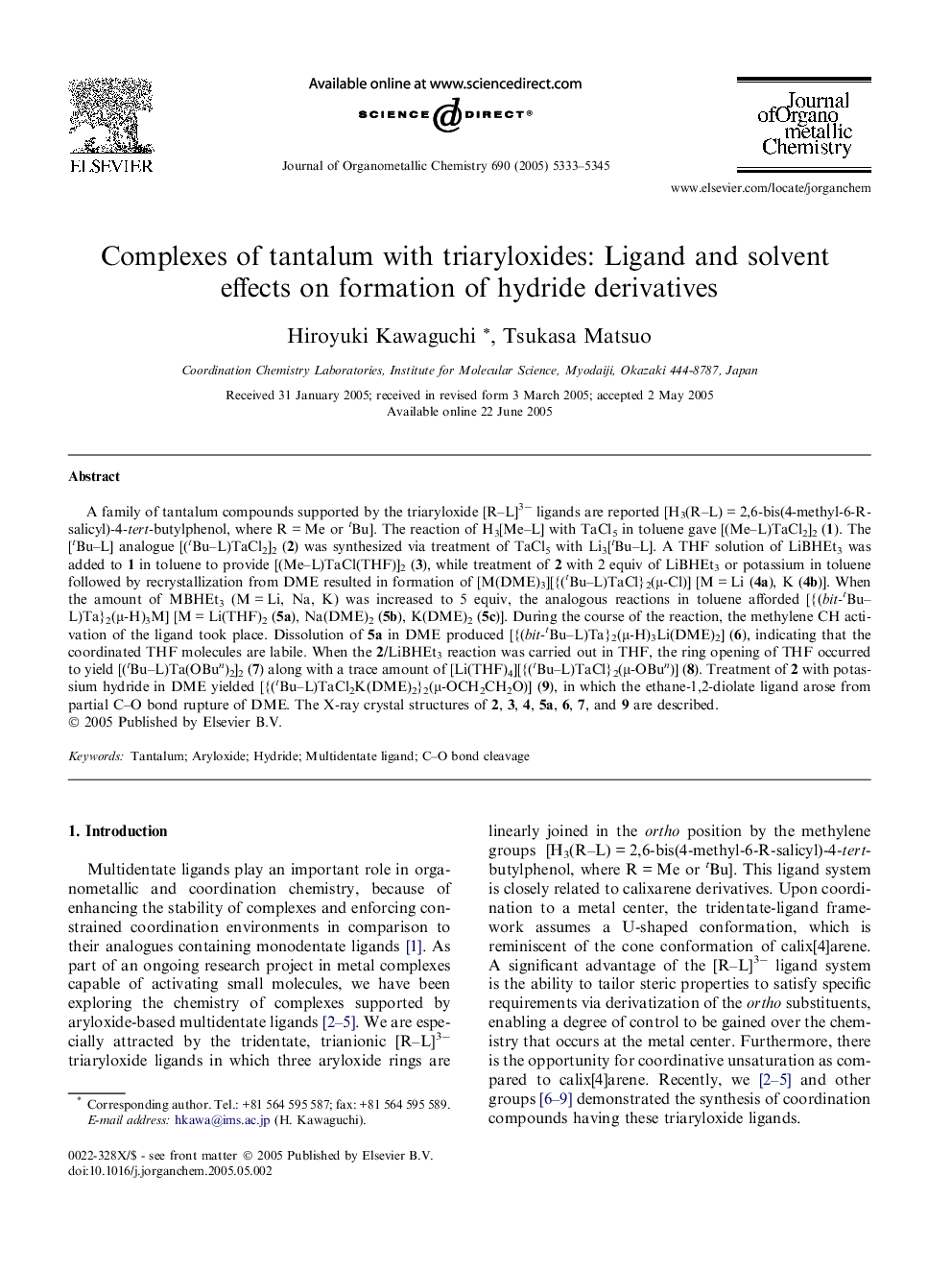| Article ID | Journal | Published Year | Pages | File Type |
|---|---|---|---|---|
| 1327251 | Journal of Organometallic Chemistry | 2005 | 13 Pages |
A family of tantalum compounds supported by the triaryloxide [R–L]3− ligands are reported [H3(R–L) = 2,6-bis(4-methyl-6-R-salicyl)-4-tert-butylphenol, where R = Me or tBu]. The reaction of H3[Me–L] with TaCl5 in toluene gave [(Me–L)TaCl2]2 (1). The [tBu–L] analogue [(tBu–L)TaCl2]2 (2) was synthesized via treatment of TaCl5 with Li3[tBu–L]. A THF solution of LiBHEt3 was added to 1 in toluene to provide [(Me–L)TaCl(THF)]2 (3), while treatment of 2 with 2 equiv of LiBHEt3 or potassium in toluene followed by recrystallization from DME resulted in formation of [M(DME)3][{(tBu–L)TaCl}2(μ-Cl)] [M = Li (4a), K (4b)]. When the amount of MBHEt3 (M = Li, Na, K) was increased to 5 equiv, the analogous reactions in toluene afforded [{(bit-tBu–L)Ta}2(μ-H)3M] [M = Li(THF)2 (5a), Na(DME)2 (5b), K(DME)2 (5c)]. During the course of the reaction, the methylene CH activation of the ligand took place. Dissolution of 5a in DME produced [{(bit-tBu–L)Ta}2(μ-H)3Li(DME)2] (6), indicating that the coordinated THF molecules are labile. When the 2/LiBHEt3 reaction was carried out in THF, the ring opening of THF occurred to yield [(tBu–L)Ta(OBun)2]2 (7) along with a trace amount of [Li(THF)4][{(tBu–L)TaCl}2(μ-OBun)] (8). Treatment of 2 with potassium hydride in DME yielded [{(tBu–L)TaCl2K(DME)2}2(μ-OCH2CH2O)] (9), in which the ethane-1,2-diolate ligand arose from partial C–O bond rupture of DME. The X-ray crystal structures of 2, 3, 4, 5a, 6, 7, and 9 are described.
Graphical abstractThis paper desribes the synthesis of triply hydride bridged ditamtalum(V) complex bearing the triarylooxide ligand. The choice of ligand substituent and solvent is crucial to their success synthesis.Figure optionsDownload full-size imageDownload as PowerPoint slide
